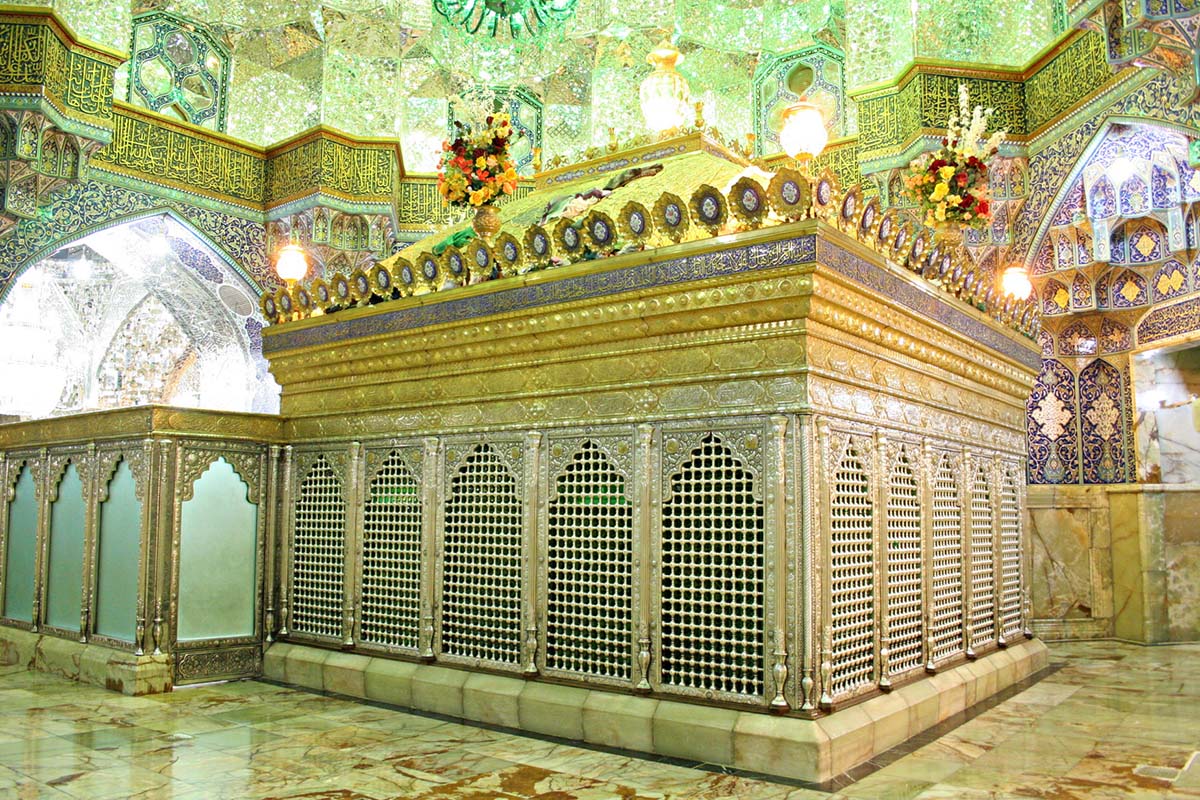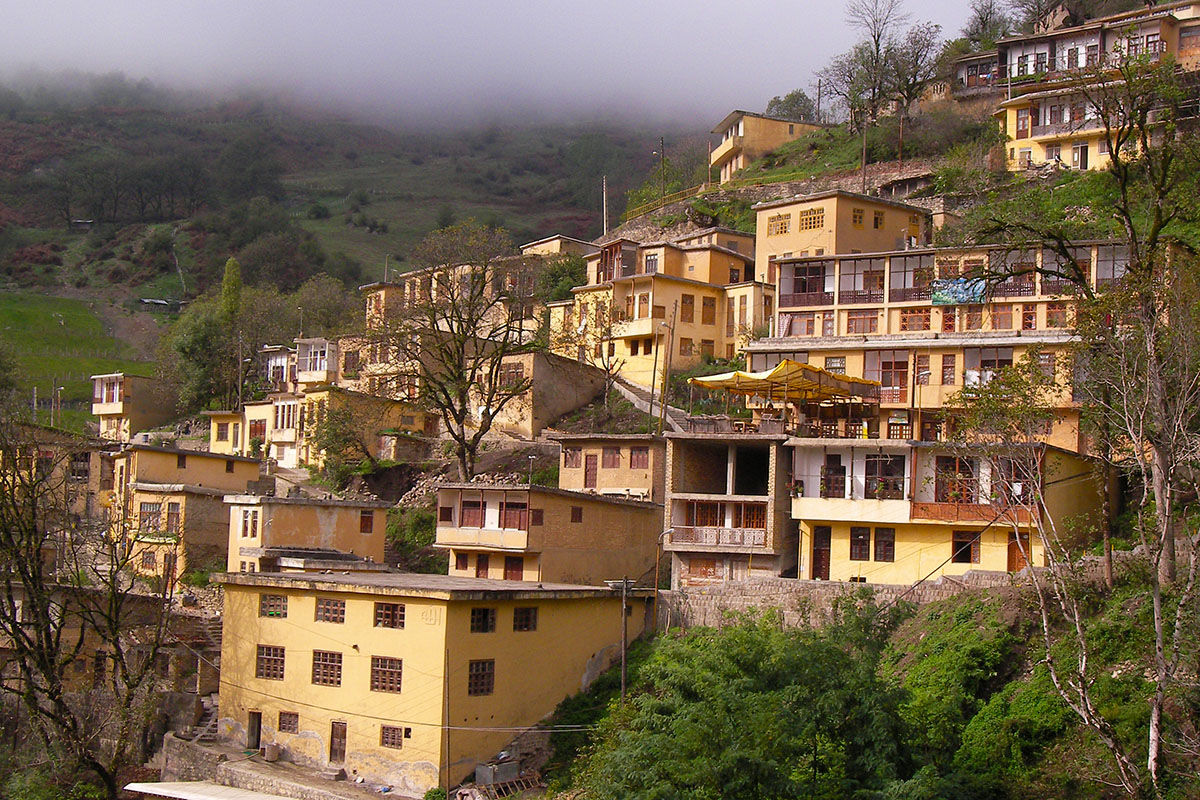Qom is a metropolis located 125 kilometers of south of Tehran and is the center of Qom province. This city is close to Qomrud River and is situated in the plain of Qom. It is the connecting interface between Tehran and the industrial provinces and also connects the south cities with north cities and provinces. This significance is not exclusive to the present, since Qom was also important in the past due to its situation at the crossroad of the Silk Road. Many titles are attributed to the city of Qom, but the official title used in the media, is “the capital of Iran's religious and cultural hub". The tomb of Masoumeh Fatima, daughter of Imam Musa ibn Ja'far, the seventh Shia imam is located in this city and also most prominent Shia leaders live in the city of Qom. This city has the largest seminary in Iran. The south land of the city is allocated to the agricultural activities. This city is by the river and the plain of Qom is considered as the agricultural and industrial pole of the province. Qom is one of the main destinations for immigration and most of these immigrants are the students of seminaries and religious academic centers.
History
According to the opinion of archeologists such as Roman Ghirshman, Qom is one of the first places which was used as a gathering place for the ancient human. In this case, this city dates back to the emergence of civilization about 10 thousand years ago. During the years after the revolution of 1979, the archeological excavations in the area confirmed the truth of this statement. The works of these excavations are now exposed at the National Museum of Iran. During Achaemenid period, Achaemenes passed Ekbatan to go to Ray through Saveh, Manzarabad Mountains and the present Hassanabad which is on the way of Qom-Tehran highway, hence their forts and monuments have been found in this area. In south of Qom and on the way of Isfahan-Qom, there is a small village named Jasb and its foundation are attributed to the Parthian period and it is said that it was a stopover for troops and horses during the campaign. Qom was an important city in the Sassanid period. The monuments from the Sassanid era such as fortresses, temples and fortifications confirm this statement. After the Arab invasion, the caliph sent a troop to Qom and captured this city, from then Qom was the destination for the Shias and Arab immigrants from Iraq. From Umavid and Abbasid period, this city gradually became the religious capital of Shia. After the death of Masoumeh, the sister of Ali ibn Musa and her burial in this city, the religious role of this city gradually expanded. People of Qom rebelled against the governments for several times during the Umavid and Abbasid Dynasties and refused to pay taxes, their rebellions were suppressed in most cases and as a result of that Qom suffered huge losses. During Al-Buyeh and Seljuk Governments, Qom began to develop and improve. With Mongol invasion, it was damaged again and with the power of Shia in the Safavid period, it made considerable developments. Afghan invasion at the end of the Safavid period made this city, a place of the battle between the people and the invaders. At the times of Zandieh and Afsharieh dynasties, Qom failed development due to the neglect of these governments. Qajar kings showed more interest in Qom. At the time of Fath Ali Shah, the city of Qom and the shrine of Masoumeh were restored, Qom was the center of the struggle against the Pahlavi regime's policies.
Climate
Qom is warm and dry and has an elevation of 930 meters with a gentle slope from the south to the north of the city. The summers are very hot and winters are very cold and dry in Qom. In terms of temperature, the best time to travel to this desert city is the months of April, May, September and October. Average annual rainfall is 125 to 215 meters and the average annual precipitation is 150 mm.
Food & Pastry
The food of people of Qom has close relation with what is obtained from the nature. Qonbit broth is the most popular traditional food in Qom. This broth is cooked with local cabbage. The plant of Qonbit tastes like radish and its appearance is similar to cabbage. Bozbash broth (vegetable), Dampokht (a kind of rice dish), Kaljoosh , Sesame halva, muffins and filing are the main food and pastries of people of Qom.
Handcrafts
Like other areas of Iran, types of traditional arts are common in Qom city with respect to its particular climate.
Carpets
Qom carpet has global popularity. Qom carpets are often woven of silk in small dimensions - that is a special feature coming from the pilgrimage city of Qom. Since each carpet is woven by only one person, it has a monotonous tissue. Qom is also equipped with workshops for complementary operations of carpet.
Inlaid
inlaid art includes carving on the wood. More than 2,000 inlaid workshops are operating in Qom and it is considered as the largest hub for this art, by having the best artists and craftsmen in Iran. The artists of this city present their works in the different cities of the Middle East and other parts of the world. Perhaps the art of inlaid is the oldest art in Qom and the earliest recorded work of inlaid in this city dates back to 700 years ago. The art in both small and large types are done on wood, ivory and bone.
Souvenir
Qom Carpet
Qom is the largest production center of silk carpets in the world and 90% of its productions are exported abroad. Qom carpet is durable and is used more for decorative aspects.
Qom file
File is a traditional pastry which is prepared by baking a mixture of wheat flour, wheat malt, sugar and oil and has a very compact texture with light brown color. The exact history of the filing period is attributed to the Qajar period. In Qom, you can find more than 2000 file shops and more than 500 tons of file are sold monthly. This product is exported to the countries of Europe and Central Asia.
Attractions
Jamkaran Mosque
Jamkaran Mosque is located 6 km from the city of Qom near Jamkaran village. It is one of the most important shrines in the country that every Wednesday night, thousands of people from around the country come to visit it. This mosque, which is attributed to the last Imam of Shia, is a specific host for numerous pilgrims. The mosque's courtyard is very vast and good facilities are provided for the travelers. After the Islamic Revolution of Iran, special attentions were made to Jamkaran mosque and most of its development is related to the two recent decades which turned the structure of this mosque from a typical small mosque to a holy place for Shia.
Fatima Masumeh Shrine
Fatima Masumeh was the sister of the eighth Imam 'Ali al-Rida. Around the shrine, there is a wall to the height of two meters and at a width of approximately (80/4, at 40/4), which was built in 950 AH and adorned with mosaic tiles. Today this wall is covered by a silver shrine. The first dome built over the grave of Fatima M. was a dome-shaped tower constructed by Zainab daughter of Imam Javad in the middle of the third century AH. It was of brick, stone and stucco. Over time, and after the burial of some Shia women near Fatima M., the other two domes were built close to the first dome. Four kings of the Safavid, two Qajar kings, as well as a number of Qajar princes are buried in this place.
Feyziyeh School
Feyziyeh School is a monument belonging to the Safavid period, which was built on the order of Shah Tahmasb. At the time of Fath Ali Shah Qajar, there was a change in its structure and in the 14th century AH under the order of Ayatollah Haeri several rooms were built around its central courtyard. The oldest part of school is its south porch decorated with beautiful mosaics of the Safavid period. This school is considered as the most important centers of Islamic Sciences in the world. Feyziyeh School replaced Astaneh School from the first half of the 13th century AH and based on valid authentic texts, dates back to mid-6th century AH and was renewed in the Safavid era. Feyziyeh is a school for training religious students. Due to its important role in the development of the Seminary and the Islamic Revolution, pilgrims and travelers are interested in visiting this center.
Jame Mosque of Qom
This historical mosque one of the biggest mosques which is built in the eighth century by Sultan Khan, the king of Turkestan. The date of one of the inscriptions is 529 AH, but the exact date of construction is not known. This mosque with domes, basement, cellar, entrance porch and attractive tile works has admirable architecture. It is a collection that embodies the beauty and moderation which created a masterpiece of historical value.
This mosque is a symbol of the ancient time and perhaps the largest mosque after the mosque of Imam Hasan Askari.
The Museum of Handicrafts
The Museum of handicrafts which is in Yazdanpanah historical building, welcomes visitors and tourists twice a day in the morning and evening. Yazdanpanah House with an area of more than one thousand meters is registered in the list of national monuments and belongs to the late Qajar and early Pahlavi periods. Yazdanpanah house has ten rooms, among them, the rooms in the southern part of the building are higher so that the air gets warm slowly. There is a window near the ceiling which takes the warm air out of the room. In this museum, the artistic works and indigenous handcrafts indicating the rich culture of this province have been exhibited in the separate showcases. In the products section, works are displayed from the fields of pottery, ceramics, cowrie, and mosaic, engraving on copper and inlaid wood, glass painting, cutting precious stones and semi-precious stones, ceramic jugs depicting the verses of Quran.
Transportation
Roads
1- Tehran-Qom road as one of the major roads linking the northern provinces of Tehran with south, southwest and southeast of the country.
2- old road of Tehran-Qom is as a major axis of heavy traffic (cargo) between Tehran and south of the country.
3- Qom-Kashan road that connects this province with the regions in the Southeast of the country.
4 -Salafchegan -Qom road that connects the city to the cities of Arak and Isfahan.
5- Qom-Saveh road that links this province with western areas of the country.
6- Delijan -Qom road that connects this city to Isfahan.
BUS
Qom bus terminal has several buses to most cities such as Tehran, Isfahan, Mashhad, Shiraz, Kermanshah, etc. Qom Bus Terminal is located outside the city of Qom with a little distance. Usually, most buses taking passengers from other cities in Qom, drop them at the entrance of Qom.
Airport
Qom airport is under construction.
Train
Iran railway that passes through this province is divided into three branches in the city of Qom. A branch connects Qom to Tehran from the north and via Tehran, you can go to provinces of Mazandaran, Korasan and Azerbaijan. The other two branches: first one via Arak links Qom to southwest regions and the last branch connects this city to the provinces in the southwest of Iran. From Qom, trains to Tehran and Mashhad is available.
Availability of transportation stations
- Baggage
Storage service is available
- Wheelchair
Access to bus stations.
Wireless Internet:
WIFI Internet is accessible in the station.











